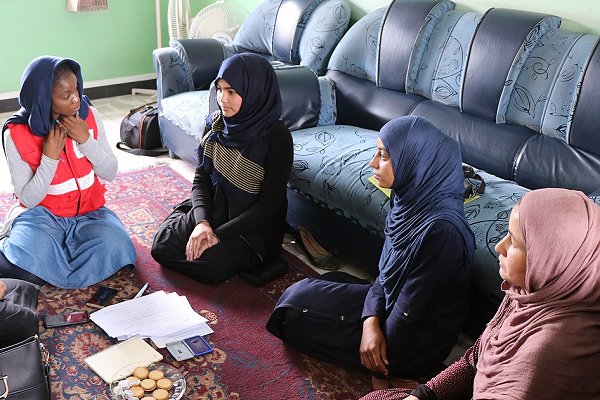
Afghanistan: ‘Drought has finished all our livestock – now it’s killing people’

(This personal story was one of three told to Gorata Fembo published by the IFRC’s Asia-Pacific regional office in Kuala Lumpur yesterday. It graphically illustrates what has become known as the ‘climate-conflict nexus’ that was the focus of the policy round table in The Hague last week.)
Shamsia Atayee, 35, is five months pregnant but hardly shows it. When she’s congratulated on her pregnancy, she forces a polite smile and says “thankyou’’ in a low tone.
“I would not wish a sixth child on anyone, certainly not in the state of poverty I am in.
“If it was by choice, I wouldn’t have fallen pregnant because we hardly survive. We have to borrow money for food.”
‘Baghlan used to be such a beautiful sight.
Now since the drought and conflict
everything is destroyed’
Drought and conflict robbed her family of a good life in Baghlan province. “My family’s income was reliant on crops and farming, as my husband used to grow and sell vegetables.
“On a week’s sale we could make enough to sustain the family’s food supply for a month, and we could buy clothes for our children and keep them warm during the cold winter.
“The drought has finished all our livestock; now it’s killing people. As our livestock died and our stored food ran out, we had nothing to live for in Baghlan.
“Conflict contributed to our hunger. We were tormented by the frequent exchange of firearms and explosions. We couldn’t go out to take care of our livestock.
“It is a double tragedy we are faced with. Baghlan used to be such a beautiful sight. Now, since the drought and conflict, everything is destroyed. There was grass then and livestock would graze, but now it is only hard patches of cracked lands and houses with bullet marks and broken bridges.
“Families are constantly on the move. When we migrated to Kabul, we travelled with other people from our community in search of a better life. The journey was filled with unimaginable suffering for us.
“In Kabul, we live in a rented two-room house costing 40 US dollars a month. Some months we can pay the rent, some we cannot.
“We used the last of our savings and my husband carried out small jobs in town. When we arrived in Kabul a couple of months back, my husband was employed as a security guard for government buildings but he was later retrenched, making life even harder for us here.
“Since falling pregnant, I have not visited the doctor for ante-natal care services. I was also diagnosed with a heart condition that requires close medical attention.
“In Baghlan, I used to visit the Afghan Red Crescent clinic, but since moving to Kabul I do not have the money to travel to the hospital. Once I had to pay a consultation fee which I did not have, and we ended up borrowing money from relatives. Life is far from easy here.”
Shamsia Atayee’s family has received emergency help from the Afghan Red Crescent Society. Aid includes shelter, household items such as kitchen sets, water containers, tarpaulins and blankets.
Gorata Fembo interviews, from right, Shamsia Atayee (see above), Khumari Aimaq and Madina Mohamed. The IFRC last month issued an emergency appeal for 7 million Swiss francs for drought and floods in Afghanistan, and the Climate Centre has provided a scientific analysis of precipitation and forecasting in the country that’s being incorporated into a new emergency plan. (Photo: Afghan Red Crescent)